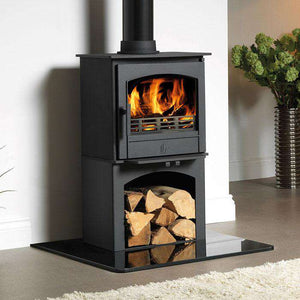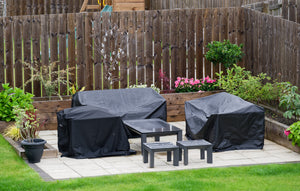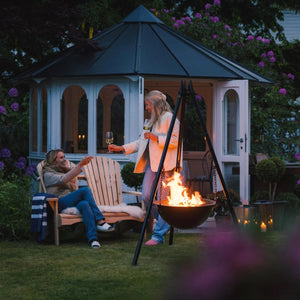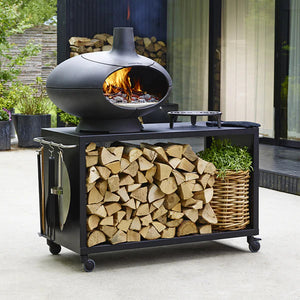Why is my stove glass discoloured?

There is nothing more satisfying than watching the roaring flames of your wood burning stove on a cool evening through a sparkling clean viewing window. After all, that’s one of the key selling points of owning a stove and is no doubt one of the reasons many people chose to buy a stove.
The last thing that you would want as a stove owner is for this view to be ruined, so if your stove glass starts to go discoloured or begins to turn black then you will want to do everything to avoid this happening and spoiling your view.
A little soot or cloudiness is normal, and some residue on the stove glass is simple by-product of burning wood or smokeless fuels.
However, if the glass is cloudy or discoloured and doesn’t wipe clean, then you may need to look at how you’re operating your fuel and why this might be happening.
So why could your stove glass be clouding over?
Burning the wrong type of fuel
It is important to properly season any fuel that you burn in your wood burning or multi-fuel stove. If your wood is too damp, too much energy will be used on evaporation rather than burning. This causes excessive smoke, which will settle in the form of soot, tar and creosote inside the stove body and the flue system.
This will leave a black soot layer on the glass.
To prevent this from happening, all logs should be appropriately seasoned prior to being burnt. We have a number of guides on our blog to help point you in the right direction. This can also be checked using a moisture meter if you are unsure of the moisture levels in your logs.

Certain solid fuels also have a high sulfur content and these should be avoided at all costs. Burning fuels high in sulfur increases the chance of your stove glass from becoming cloudy or foggy, as the sulfur reacts to water condensation and produces sulphuric acid which in turn will erode the glass it settles on.
If you are experiencing a ‘cloudy’ effect on your stove glass that cannot be wiped away, unfortunately, there is nothing that can be done other than replacing your stove’s glass. We have a wide range of heat resistant glass designed to suit almost every appliance.
Fuel touching the glass
It may seem like a simple thing to avoid, but fuel touching the glass is the most common cause of blackening or discolouration on stove glass.
If your stove glass is blackening or changing in a single area rather than all over it may be the case that you are overloading your stove or loading your fuel too close to the glass.
A simple solution to this issue would be to always ensure you are not placing any fuel too close to the stove glass and making sure that you’re only burning the right amount at any given time.
Not operating your stove correctly
Most modern wood-burning or multi-fuel stoves have an Airwash system as standard. These systems, in their various forms, are designed to discourage soot from settling on the glass and building up. If you are experiencing a build-up of soot on your stove glass, it may be a simple case of not using your airwash system correctly.
Another possible issue is that your stove is not burning at an optimum temperature. Your appliance may not be getting up to a hot enough temperature for the airwash to work correctly. A way to avoid this is to avoid ‘slumber burn’ and not let your stove tick over gently for long periods.

The best way to avoid any cloudiness or discolouring on your wood-burning or multi-fuel stove is to keep up to your stove maintenance and clean the stove glass on a regular basis. Here at Stove Supermarket, we sell a number of stove maintenance products, including a Valiant Active Glass Scrub and a Stove Care Kit to make sure you've got all the tools you need to maintain your stove.
Keeping your stove clean has a number of benefits, but most importantly it means that you can enjoy your wood burning or multi-fuel stove when its performing at its best!
- Stove Reviews








